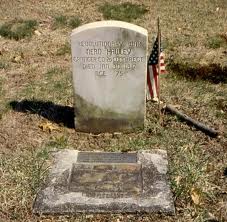Few soldiers at Valley Forge have as much at stake in the fight for freedom as Nero Hawley. For Hawley, the muddy little city of huts that the Continental Army has thrown up so hastily on the hills above the Schuylkill in the winter of 1777-78 is a way station on a rutted road to the Promised Land. Hawley, born in 1758, is a Continental soldier from Connecticut. He is also a slave who has agreed to take his owner’s place in the army in exchange for freedom at the end of the war.

Black soldiers have fought for America since the Revolution began in April 1775, and fought well. They were at Lexington and Concord and Bunker Hill. They crossed the Delaware with Washington. They fought at Brandywine, where Edward Hector, a black soldier in the Third Pennsylvania Artillery, bravely gathered up arms discarded on the battlefield even as the British advanced. And now, they are at Valley Forge.
By the time the war ends in 1782, about 5,000 African Americans will have fought for American independence. But many more – anywhere from two to five times as many – will have rallied to King George III, drawn by British promises of liberation that are more convincing than lofty declarations about human equality.
As the winter wears on at Valley Forge, desertion and disease are shrinking the Continental Army. Gen. George Washington must act quickly to build up his force before fighting begins again in the summer. The crisis gives birth to two schemes for tapping a pool of manpower that Washington has been reluctant to use before – slaves.
Gen. James Varnum of Rhode Island has proposed recruiting slaves in his home state and giving them their freedom as soon as they enlist. They will form a mostly black unit, one of only two or three in a racially integrated army.
And one of Washington’s aides, idealistic, young John Laurens, 23, has suggested to his influential father, Henry Laurens, the president of Congress, a similar plan for enlisting slaves in the Laurens’ home state, South Carolina. Neither the elder Laurens nor Washington gives young Laurens’ proposal more than lukewarm support.
The Rhode Island plan will succeed. John Laurens’ South Carolina project, unable to stand against deep fears among Southern whites of slave revolt, will remain the unfulfilled dream of a man far ahead of his time.
The Varnum and Laurens plans are the latest halting steps in a strange, clumsy dance between black and white Americans of the Revolutionary era. White Americans cannot fight a war against the king without taking account of black Americans. When the American Revolution begins in April 1775, the 13 rebellious colonies have a population of about 2.5 million, including about 500,000 blacks, most of them slaves.
Heady talk of freedom is everywhere. The slaves have heard it, and want their share. Many white Americans, even in the South, have begun to see an uncomfortable incongruity in keeping other men in bondage while fighting for their own liberty. (Washington, a Virginia slave owner, seems in his private correspondence to be uneasy about slavery, but never takes a public stand against it. He does provide in his will that his personal servant, William Lee, is to be freed upon Washington’s death and that his other slaves are to be freed after his wife’s death.)
The dispute between mother country and colonies makes heroes of several African Americans. When Redcoats fire on a Boston crowd in 1770, killing five colonials in an incident that comes to be known as the Boston Massacre, the first to die is a black man, Crispus Attucks. When the war begins in April 1775 at Lexington and Concord, one of the Americans wounded is a black man, Prince Estabrook.
When Americans and Redcoats clash at Bunker Hill, a black man, Salem Poor, so distinguishes himself that his commanding officers recommend to the Massachusetts legislature that he be rewarded because “in the person of this said Negro centers a brave and gallant soldier.”
But, for a while, it looks as if the only reward Poor and other black soldiers will get is the boot.
Washington arrives in Cambridge, Mass., on July 2, 1775, to take command of the Continental Army.
A scant eight days later, an order goes out banning the enlistment of “any deserter from the [British] Army, [or] any stroller, Negro, or vagabond.” Black soldiers already in the new Continental Army will be allowed to remain – for the moment.
By autumn of 1775, it is beginning to look as if blacks will be excluded from the Continental Army altogether. On Oct. 8, 1775, Washington and his generals agree unanimously “to reject all slaves [for enlistment], and, by a great majority, to reject Negroes altogether.”
But by the end of December, the high command reverses position, changing its mind, if not its heart.
The generals are responding to a proclamation on Nov. 7, 1775, by Lord Dunmore, the royal governor of Virginia, offering freedom to “all indented servants, Negroes, or others” who flee their rebel masters and join the king’s forces.
Washington labels Dunmore an “arch traitor to the rights of humanity” who “should be instantly crushed.”
Suddenly, black soldiers seem a lot more important to Washington. He writes on Dec. 31, 1775, to John Hancock, then president of Congress, explaining that he has authorized the reenlistment of black soldiers already in the army. Otherwise, he warns, “it is to be apprehended that they may seek employ in the Ministerial Army.”
Congress resolves Jan. 16, 1778, “That the free Negroes who have served faithfully in the army at Cambridge, may be re-enlisted therein, but no others.” But the need for more men trumps any legal ban on enlisting blacks. Recruiting officers in the North turn readily to African Americans to fill the manpower quotas imposed on the states by Congress, offering freedom in return for military service.
Meanwhile, some whites work out deals to have African Americans such as Nero Hawley substitute for them in return for eventual freedom.
(Hawley survives the war and is freed in November 1782. He becomes a brick maker in Trumbull, Conn., receives a pension of $40 a year in 1813 for his service, and dies in 1817.)
However wary Washington may have been of recruiting among slaves, he endorses Varnum’s plan.
The Rhode Island legislature moves quickly, passing a law in February 1778 providing that “every able-bodied Negro, mulatto, or Indian man-slave may enlist into either of… two battalions, to serve during the continuance of the present war with Great Britain; That every slave so enlisting shall… upon his passing muster… be immediately discharged from the service of his master or mistress, and be absolutely free.”
The law also provides that the state compensate the slave owners for their loss, “at a price not exceeding one hundred and twenty pounds.” The Rhode Island legislature ends the program on June 10, 1778, because of the cost of compensation.
But before it ends, more than 200 African Americans sign up. Richard Rhodes, born in Africa in 1760, would speak for all the recruits when he recalls years after the war: “I entered the Army for the purpose of obtaining my freedom.”
On Aug. 24, 1778, a report by Adjutant General Alexander Scammel will find 755 African Americans in the Continental Army – and that doesn’t include the newcomers from Rhode Island. Throughout late winter, new soldiers – black and white – stream into Valley Forge. There, they find themselves part of a force that is being shaped into fighting trim by another newcomer, a strangely likable man with little knowledge of English but a talent for drilling troops, no matter what their skin color or language.
Source: The Philadelphia Inquirer, posted on Sun, Mar. 09, 2003
Capital of the Rebellion-Philadelphia and the Revolution, 225 years ago.
By Michael D. Schaffer, Inquirer Staff Writer
Contact Michael D. Schaffer at 215-854-2537 or mschaffer@phillynews.com.


